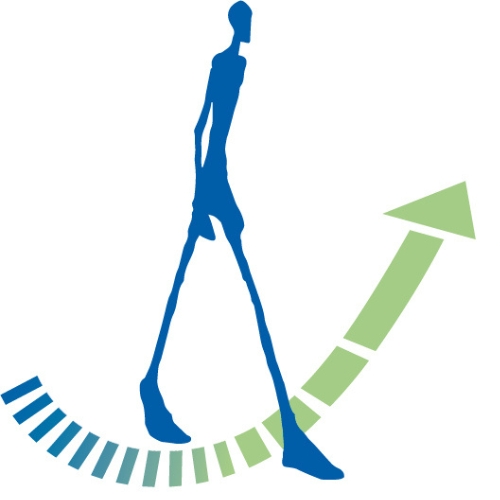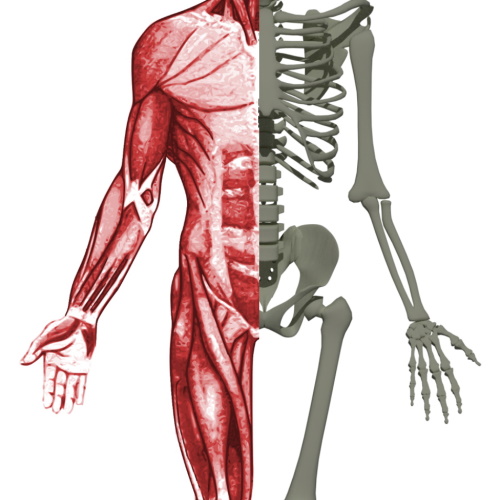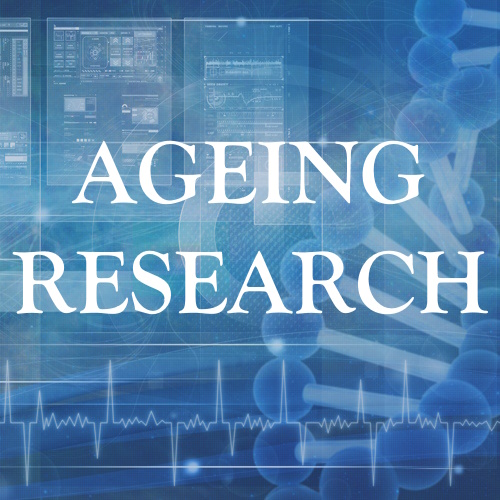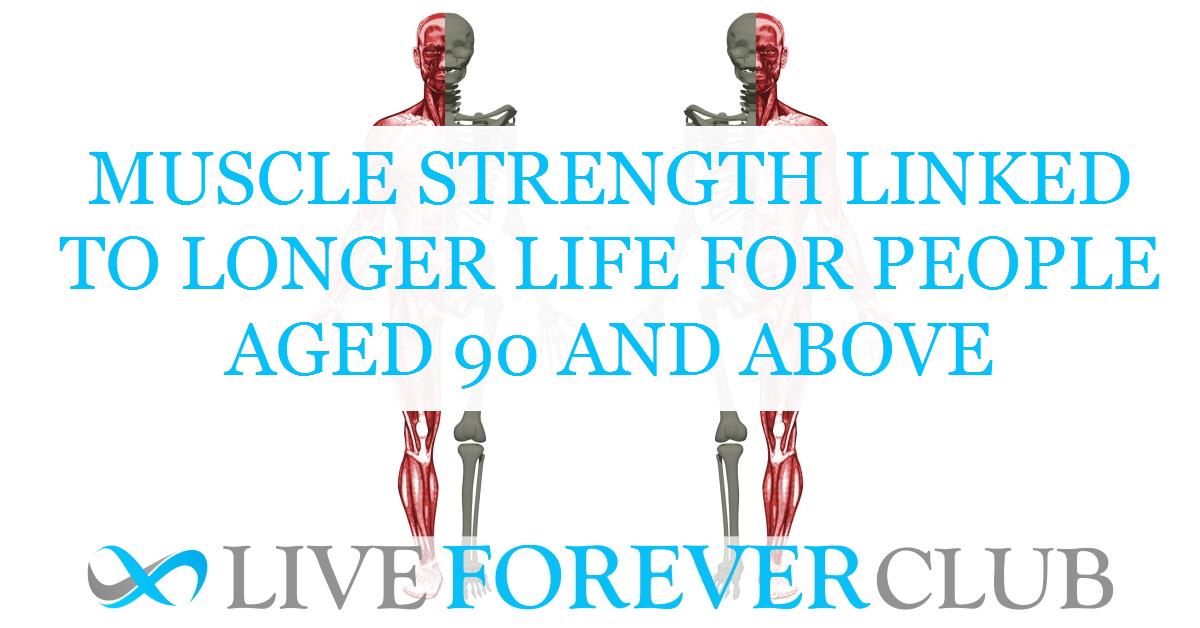As we age, our bodies undergo changes that impact how we live and move. The gradual loss of muscle strength is one of these significant changes. However, how does this loss of strength relate to our survival, especially for those aged 90 and above, often referred to as the "oldest old"?
A recent international study, led by led by Lars Louis Andersen from The National Research Center for Work Environment, sheds light on this question, emphasizing the importance of muscle strength in extending life expectancy. In this blog, we'll break down the study's findings and explore why maintaining muscle strength could be a crucial key to longevity.
Ageing and Muscle Strength
Ageing involves many changes in our physiology, including a decline in muscle mass and strength. As individuals grow older, these changes can have far-reaching impacts on their health, independence, and ultimately, survival. One practical measure of muscle strength often used in scientific research is handgrip strength. It acts as a proxy to assess overall muscle health and has been linked to risks for various health issues, such as cardiovascular diseases, mobility limitations, and even death. For the oldest old, maintaining a certain level of strength may be particularly vital to ensure they continue to live well.
A recent study published in the Journal of Cachexia, Sarcopenia, and Muscle takes a closer look at the connection between muscle strength and survival in people aged 90 and above. The researchers assessed muscle strength using handgrip tests and examined its correlation with mortality in nearly 2,000 participants across 28 countries. Let's dive deeper into what they found.
Oldest Old Across 28 Countries
The study drew data from the Survey of Health, Ageing, and Retirement in Europe (SHARE), covering 27 European countries plus Israel. It spanned several survey waves, from 2004 to 2022, involving participants aged 90 years or older. This is one of the largest and most diverse datasets used to examine muscle strength in this age group, which adds to the study's reliability and relevance.
In total, the researchers analyzed data from 1,890 individuals, of whom 61.6% were women. Participants were assessed using handgrip dynamometry, which measures grip strength in kilograms. Muscle strength was taken as the highest reading from either hand after two attempts. Additionally, the study considered several other factors like age, sex, smoking status, Body Mass Index (BMI), marital status, education level, and geographic region to control the results better.
Key Findings: Muscle Strength and Mortality
A Gradual Decline That Matters
The study's findings are significant. During an average follow-up of over four years, more than half of the participants (51.4%) passed away. The results revealed a clear association between muscle strength and mortality risk. Specifically, higher muscle strength was linked to a lower risk of death, while lower muscle strength increased the risk. This correlation was consistent across both men and women.
The researchers used median handgrip strength as a reference point to assess risk. For all participants, the median handgrip strength was 18 kg. Those who fell in the lowest 10th percentile (10 kg) had a 27% higher risk of death compared to those with median strength. Conversely, those in the 90th percentile (31 kg) had a 31% lower risk of death. This association remained consistent even after excluding participants who passed away within the first two years of the study, confirming that the findings were robust.
Differences Between Men and Women
Interestingly, when stratifying the data by gender, men generally had higher handgrip strength (median 26 kg) compared to women (median 16 kg). Despite this, the pattern of the relationship between strength and survival was similar for both sexes. For men, those in the lowest 10th percentile (15 kg) had a 33% higher risk of mortality compared to those at the median. For women, those in the lowest 10th percentile (10 kg) had a 19% increased risk.
The study concluded that muscle strength affects mortality risk in a gradual manner rather than showing a distinct threshold. This means that even small improvements in muscle strength can potentially have a positive impact on survival, which holds important implications for promoting physical activity among the oldest old.
Why Muscle Strength Matters for Longevity
Muscle as an Indicator of Health
Muscle strength is not just a measure of physical capability; it is also an indicator of broader health. Muscles play a role in various critical functions, from metabolism to endocrine health. As we age, the reduction in muscle mass leads to decreased mobility and a greater risk of falls and injuries. Moreover, muscles act as endocrine organs, releasing molecules called myokines that help regulate inflammation, insulin sensitivity, and body weight. By maintaining muscle strength, older adults can support these broader physiological processes, potentially reducing the risk of various chronic conditions.
Protecting Against Frailty and Falls
In advanced age, frailty becomes a major concern. It is characterized by decreased muscle mass, fatigue, and vulnerability to external stressors. Muscle strength can be thought of as a protective shield against frailty. With increased strength, older adults are more likely to maintain independence, avoid falls, and reduce the risk of injuries that can lead to hospitalization or a decline in quality of life. Falls are one of the most common causes of injury in the elderly, and even minor falls can have severe consequences. Having greater muscle strength helps prevent such incidents by improving balance, coordination, and overall stability.
Mental Health and Cognitive Function
Muscle strength also correlates with mental well-being and cognitive function. The study noted that those with higher handgrip strength often show better cognitive performance and fewer symptoms of cognitive decline. This could be because physical health and brain health are closely intertwined. Maintaining an active lifestyle that includes strength training can help improve blood flow to the brain, reduce inflammatory markers, and promote the growth of new neurons. Thus, keeping muscles active does not just enhance physical health—it also keeps the mind sharp.
Implications for Health Interventions
Resistance Training: A Solution for All Ages
One of the key takeaways from this study is that muscle strength is highly adaptable—even for those aged 90 and above. Resistance training, which involves exercises that make your muscles work against a force, is one of the most effective ways to increase muscle strength. Although strength training might seem daunting for the oldest old, evidence supports that it can be safe and beneficial, even in frail individuals.
Programs tailored for the elderly, including low-intensity resistance exercises, can lead to significant improvements in muscle strength and functional capacity. This, in turn, can translate into a better quality of life, more independence, and possibly a longer life. Exercise routines should be adapted based on an individual's health status, and supervision from trained professionals can help ensure these exercises are safe and effective.
Reducing Healthcare Burden
The findings also have implications for public health and healthcare systems. As life expectancy increases globally, the number of people reaching 90 and above continues to rise. This age group is particularly susceptible to conditions that require long-term care, increasing the burden on healthcare systems. By promoting muscle strength through resistance training and other interventions, it may be possible to reduce healthcare costs by improving the overall health of this population. A stronger older adult is less likely to be hospitalized due to falls, fractures, or other complications, reducing the need for costly medical care and improving the quality of life.
Challenges in Implementing Strength Training for the Oldest Old
While the benefits are clear, implementing strength training interventions for the oldest old is not without challenges. Common concerns include the risk of cardiovascular complications, musculoskeletal injuries, and falls during training. Therefore, careful consideration of an individual's health status and supervised programs are crucial. Personalized, progressive, and well-structured training programs that start with low intensity and gradually increase can help mitigate these risks.
Another challenge is accessibility—many older adults may not have easy access to fitness centers or equipment. Community programs, home-based exercises, or even resistance band exercises can offer feasible alternatives to help overcome these barriers. Encouraging social support networks involving family members, friends, or community groups can also motivate older adults to stick with their exercise routines.
Every Kilogram Counts
This comprehensive study provides compelling evidence that muscle strength is a crucial determinant of longevity in the oldest old. Rather than focusing on achieving a specific threshold, it highlights that any increase in muscle strength is beneficial. This gradual and adaptive relationship means that it's never too late to start focusing on strength, even for those in their nineties.
Maintaining muscle strength through appropriate exercise interventions, particularly resistance training, can help improve survival rates, reduce the risk of frailty, and enhance both physical and mental well-being. Given the rising population of older adults, incorporating strength training into regular health recommendations could have a profound impact on public health outcomes and healthcare costs.
The findings remind us that aging does not mean giving up on physical capabilities. On the contrary, it presents an opportunity to invest in one's health actively. Every additional kilogram of muscle strength counts towards a healthier, more independent, and longer life.
Practical Tips for Building Muscle Strength in Older Adults
For those looking to increase their muscle strength, here are some practical tips:
Start Small: Begin with simple resistance exercises using light weights or resistance bands. You can also use household items like water bottles as makeshift weights.
Consult Professionals: Always consult a healthcare provider or physical therapist before starting a new exercise program, especially if you have underlying health issues.
Focus on Major Muscle Groups: Include exercises that target major muscle groups—legs, arms, chest, and back. Squats, wall push-ups, and seated leg raises are good options.
Make it Social: Exercise with friends or family. This adds a layer of motivation and makes it more enjoyable.
Set Realistic Goals: Set small, achievable goals. It could be as simple as lifting slightly heavier weights after a few weeks or increasing the number of repetitions.
Be Consistent: Muscle strength doesn't build overnight. Aim for consistency over perfection. Even exercising two to three times a week can yield significant benefits.
The Gift of Strength
Ageing is a journey that brings with it many changes, but it doesn’t have to mean losing strength and independence. The research shows that maintaining muscle strength is one of the best gifts we can give ourselves as we grow older. For the oldest old, investing in muscle strength can mean not just adding years to life, but also adding quality to those years.
And the best part is, it's never too late to start. Whether you’re 50 or 90, the benefits of building muscle strength are clear—more independence, a lower risk of chronic illnesses, and perhaps, a longer, happier life.
The study is published in the Journal of Cachexia, Sarcopenia and Muscle..







